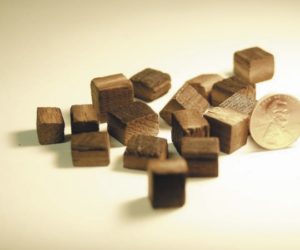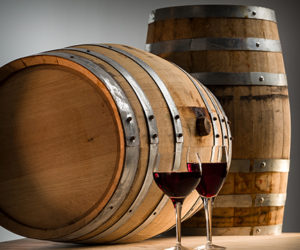Winemaker John Fletcher of Hillside Estate Winery in the Okanagan Valley of British Columbia, Canada offers his thoughts on adding oak to your wine:
Oaking Hillside Wines
Many of the Hillside Estate wines are aged in 45-gallon French or American oak barrels, which are small by commercial standards. Some wines, such as Cabernet Sauvignon, Pinot Gris, Pinot Blanc, and Sémillon, are fermented in French oak barrels to create complexity. Barrel fermentation adds a light, fruity softness to the wine. The barrels are replaced every three years to ensure the highest level of oak extraction.
When used correctly, oak adds flavors varying from a light coconut to a toasty, almost burnt flavor. Choosing the correct oak is an art. At Hillside, wine spends its time in French or American oak barrels, or a combination of both. The time in the barrel is monitored to allow the wine to gain the desired characteristic of the oak. The wine is removed from the barrel only when it has reached the desired level of oaking. The correct amount is determined by tasting.
Many of Hillside Estate’s wines spend long periods in oak. The smaller volumes of wine made by home winemakers need to spend a fraction as much time in oak. Larger barrels equal less oak extraction over time; small barrels equal more oak extraction over time. Therefore, less contact with oak is needed in smaller containers. Small barrels are an expense, in dollars and time, that many home winemakers can’t afford. But alternative methods of adding oak to wine are readily available and simple.
Adding Oak at Home
Oak is available in extract, chipped, and powdered form. Chips offer the greatest variety of toasts and species. Use lightly toasted American oak for a coconut flavor. Lightly toasted French oak gives a slight vanilla flavor. Use the darker toasts in reds to create a robust, earthy flavor. The rule of thumb is to not overpower the wine with oak. Lighter wines require less oak. German wines generally are not oaked.
It is important to understand the difference in volume between the large amounts produced by a commercial winery and the small batches from home winemakers. Commercial wineries produce hundreds of gallons of wine in a single vat, while home winemakers produce five to ten gallons (20 to 40 L) per vat.
Therefore, contact of the wine to the oak (and also to the skins) should be reduced for the smaller volumes. A good proportion of oak chips for home use is three grams of chips per liter. To use oak chips, rinse them in a mild (10 ppm, which is equivalent to one Campden tablet per five-gallon/19-L batch) sulfite solution.
Add oak chips to your wine after it has been racked for bulk aging. Use a glass or stainless steel container. A handful of chips (about one-quarter cup/60 mL) is all that is necessary to add complexity to the wine. Taste your wine two to three days after you have added the oak. Continue until you notice the oak flavor. Then taste on a daily basis.
When your wine has reached the level of oak you wish, rack it off the oak into a clean container. If you think more oak or different oak is needed, follow these steps again. Remember, you can always add more oak; but you can’t remove oak.
Another method is to make a plastic tube for the oak. Take a plastic tube slightly smaller than the neck of the vessel you are using. Block one end and drill 1/16-inch holes through the entire length of the tube. Add the oak chips to this tube and suspend it in the wine. This will save you from having to rack the wine off the chips. You can also use different oak at different times to build depth.
If you wish to ferment with oak, use powdered oak. Fill a sanitized fine nylon bag to keep the powdered oak from clogging your siphon. For whites, use about 1.4 oz. (40 g). For reds, use about 7 oz. (75 g).
Remember, you can add more oak. Keep a logbook and record the amount and length of time you oak your wine so you can adjust the next time you vint the same grapes.
Whatever the wine, the greatest judge is the winemaker himself. The winemaker is responsible for the taste, complexity, and finish of the wine. The winemaker’s soul is expressed in the wine. Good luck and good winemaking.






